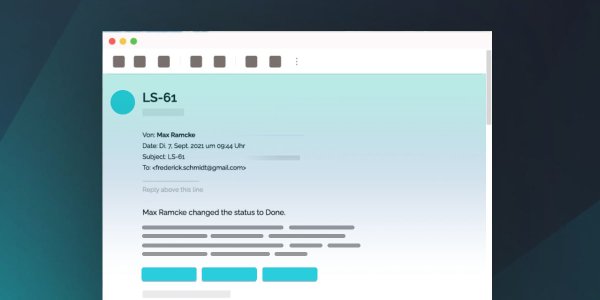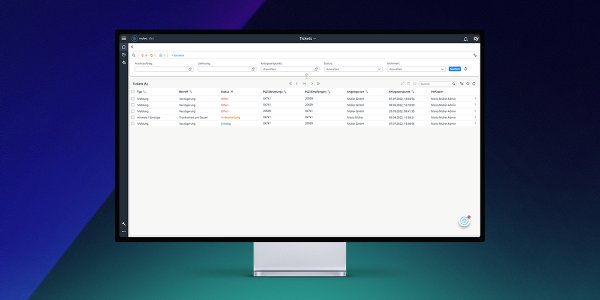Signature here, documentation there, receipt there - every truck transport automatically involves an administrative effort that is legitimate. However, the traditional way with paper, pad and pen is tedious and, above all, no longer necessary. It's a good thing that the electronic consignment note (eCMR) has become a reality in transport logistics. We now explain why it will no longer be feasible without it and how many benefits the digital process has for all users.
Technically and legally, the course has been set; in theory, the eCMR can now replace the classic CMR consignment note in every transport process. Now, however, it is partly a matter of creating trust in the digital protocol and the electronic processes. The prerequisite for this is that all parties involved are open to new ways of doing things. Some people are still reluctant to take this step. After all, Germany loves documents in paper form. Preferably everything in duplicate so that everyone has their own version. Neatly filed, of course.
This conservative way of thinking is still deeply rooted in German business culture, which is why users are sometimes reluctant to accept the digital consignment note. However, industry experts are certain that, given the numerous advantages, the digital solution will also prevail in the - truly traditional - process of freight documentation.
What is the difference between CMR and E-CMR?
CMR is the abbreviation for "Convention relative au contrat de transport international de marchandises par route". This means: "International agreement on contracts of carriage by road". The CMR therefore refers to an international agreement on the transportation of goods by road and applies both nationally and across national borders.
A CMR consignment note is an internationally recognized standard consignment note for the transport of goods by road. It is mainly used in cross-border traffic and serves as proof of acceptance, takeover and delivery of the consignment - both for the recipient and the sender. The crucial point is that the CMR is a document in classic paper form.
The eCMR works on the same principle as the traditional paper process - with one decisive advantage: the eCMR finds its way digitally to all parties involved in the road freight transport supply chain at lightning speed.
Status quo of the eCMR
As many as 3/4 of European logistics companies currently use the eCMR. However, only one in twenty companies relies exclusively on the digital version of the delivery bill. Most therefore only use the eCMR sporadically. Germany only decided to join the eCMR protocol for the international carriage of goods by road in 2021. The entire Baltic region, Romania and Iran were ready earlier. Given the numerous advantages, why remains questionable.
The digital consignment note: transparent, ecological, efficient, secure
The eCMR takes over what was previously documented manually on paper. Thanks to the eCMR, carriers no longer need to keep paper-based freight documentation in their hands and can save on process steps. One of the main advantages of the eCMR is therefore the transparency that the electronic route enables thanks to established templates and international standards. Recipients and senders can track and trace the consignment at every stage of the delivery process. This also increases efficiency, as updates are made in real time. At an administrative level, the digital route significantly reduces the workload for logistics employees. Checking, searching for folders, sorting, filing - these steps are no longer necessary. Media disruptions and transmission errors are also minimized and an overview of ongoing processes is constantly available.
Another advantage of introducing the eCMR is the immediate reduction in paper consumption. What's more, if there is no paper, there is nowhere for it to flutter around, get lost or smudged. In practice, truck drivers no longer even have to get out of the truck to have the receipt signed and processed. A welcome side effect: fewer pedestrians on a factory site automatically means less potential for accidents involving personal injury.
To cut a long story short - why the E-CMR will be indispensable in the future:
- Environmentally friendly, as less paper is used
- Smart processes for a lean workflow: fast, efficient, live
- Goodbye paperwork: all information centralized in one place
- Less contact on the factory premises ensures greater safety for truck drivers
- Digital documentation reduces sources of error, language barriers and misunderstandings for carriers. This is particularly important in international freight transport.
So why are digital consignment notes so little used? Technology should not be seen as a threat, but as a support. In the digital world, people make the difference... so we should all get on with it and use the possibilities sensibly. The eCMR is an important start here.
"Nothing is more constant than change - and that's a good thing. The skepticism or, in some cases, fear of change in the freight industry is understandable. But we firmly believe that the transport logistics process will no longer work without digital updates in the future. The modern infrastructure is now simply far too complex for that. The world is changing. Always has. And digital solutions such as the eCMR will help us to ensure that we don't get in over our heads. We're sure of that,"

